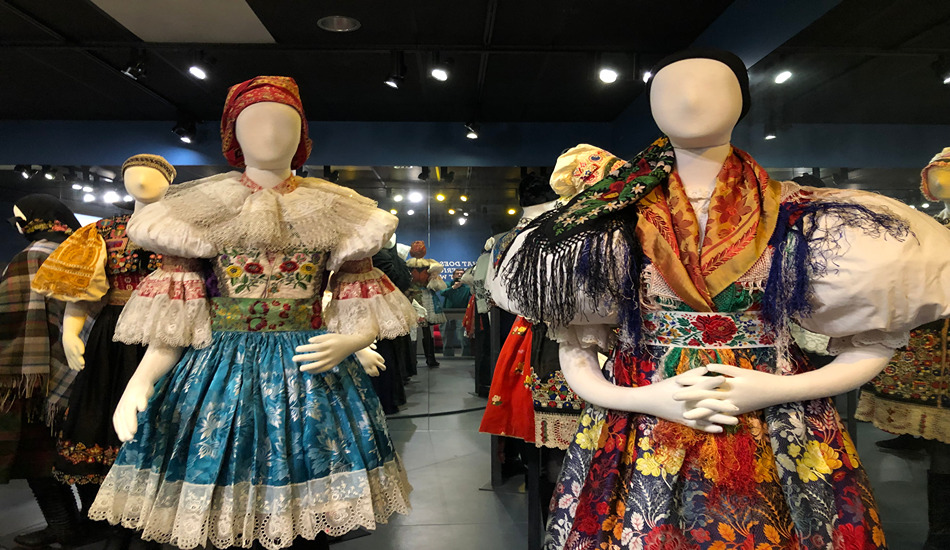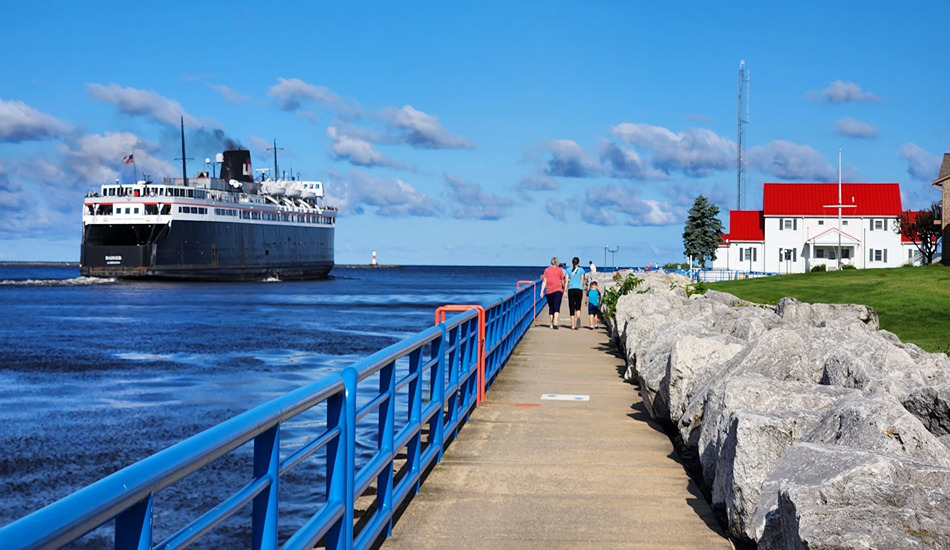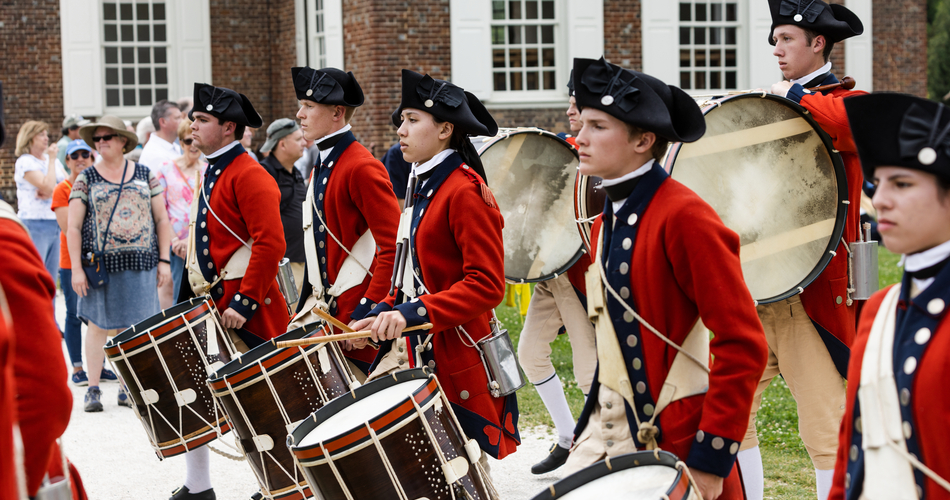Iowa’s second-largest city offers a bounty of engaging tourist attractions, including a nationally recognized museum focused on Czech and Slovak culture
By Randy Mink, Senior Editor
Americans with Czech or Slovak ancestral roots will find themselves right at home touring the National Czech & Slovak Museum & Library (NCSML), a star attraction in Cedar Rapids, Iowa. One of the best ethnic museums in the United States, it actually appeals to anyone with an interest in culture, history and the immigrant experience.
While I don’t trace my own family’s ties to the part of central Europe that is now the Czech Republic and Slovakia, I am always curious about European settlements in America—how they started and how the current generation perpetuates immigrant stories and keeps Old World traditions alive.
Exploring Cedar Rapids’ Czech Village
Soon after arriving in Cedar Rapids, I made a beeline to the Czech Village neighborhood, home to the National Czech & Slovak Museum and a few commercial establishments on 16th Avenue where remnants of ethnic heritage linger.
Czech Village developed in the 1880s as an extension of New Bohemia, a neighborhood across the Cedar River where Czechs and other European immigrants worked in meatpacking plants. Today the adjacent communities are referred to as The District, an area full of inviting shops and eateries.
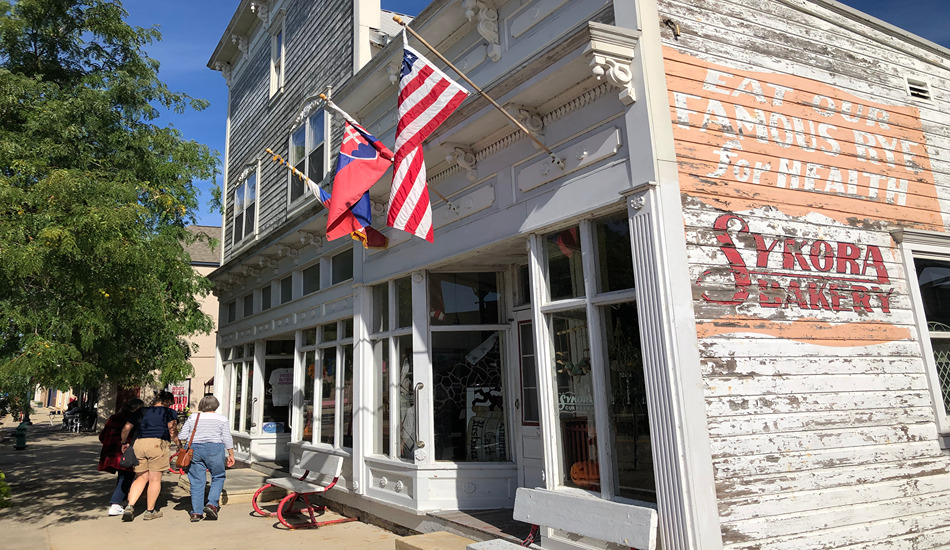
Sykora Bakery, Czech Village. (Randy Mink Photo)
While much of Czech Village’s ethnic identity faded after a major meatpacking plant closed 30 years ago and people moved away, Sykora Bakery is hanging on to preserve culinary traditions. The building, constructed in 1900, has housed a bakery since 1903.
Marna Trcka, manager of Sykora Bakery, laments that the neighborhood has changed, recalling the Czech meat market that disappeared long ago and the general store that sold Czech candy. Czech language magazines and a local Czech newspaper were available, and Czech was spoken on the street.
“It was a great place to grow up,” Trcka told me. When I asked about witnessing slices of Czech culture that may have survived, she responded, “You’re 30 years too late.”
As for a younger generation keeping the heritage alive, Trcka said, “My kids have no interest. But things change. That’s just the way it is.”
Taste Treats and Antiques in Czech Village
The bakery’s kolaches, the iconic Czech and Slovak pastry treat, come in more than a dozen flavors. Fruit fillings include apple, blueberry, raspberry, prune, peach and lemon poppy seed. Equally delectable are the cream cheese, vanilla cream and Bavarian cream varieties of these round discs of buttery dough.
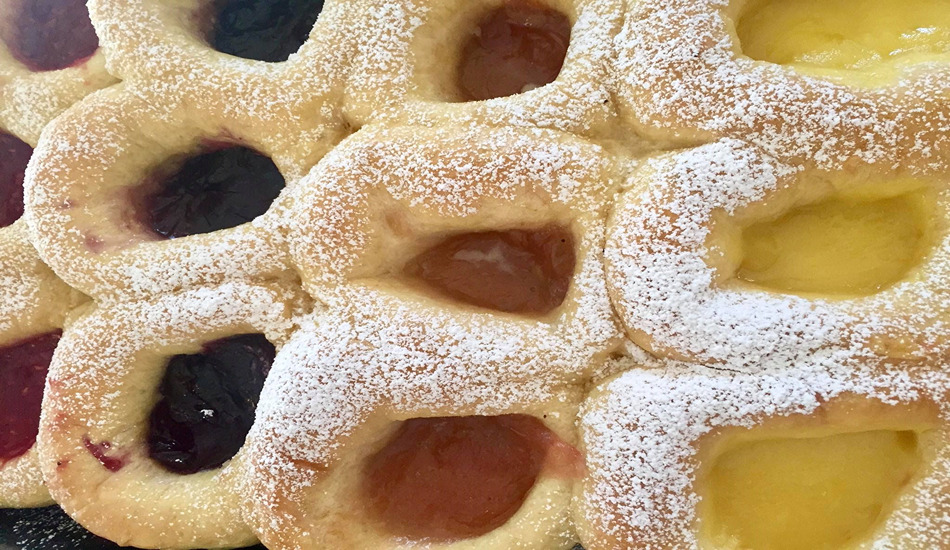
Kolaches at Sykora Bakery
Babovka is a poppy seed ring cake with glazed fruit and raisins, while Sykora’s Bohemian hamburger features a mound of poppy seeds tucked inside a slider-size bun glazed in white frosting. Or try the apple-raisin, cherry-nut or poppy seed strudel.
Until recently, Sykora Bakery had a lunch menu that listed Czech, Slovak and Moravian fare like smoked sausage and roast pork. Entrees were served with sauerkraut and dumplings, two slices of Bohemian rye bread and a side dish such as cucumber and onions in cream, pickled beets, or pickled bologna and onions.
Shopping in Cedar Rapids’ Czech Village
I like prowling around antiques shops and found two on 16th Avenue. Czech Village Antiques has a whole section crammed with items from the former Czechoslovakia—flags, clothing, jewelry, postcards, books and magazines, kitchen gadgets, beer glasses and framed art. Catching my eye were things like a 1960s policeman’s motorcycle helmet and a 1970s forester’s uniform jacket. Also of interest were handmade Czech and Slovak wall hangings (kuchynka), pieces of folk art stitched with folk sayings or lines from poems. They were a popular kitchen decoration from 1900-1940.
Down the street, Czech Cottage deals in hand-cut crystal objects, glass Christmas ornaments, garnet jewelry and other wares imported from the Czech Republic and other European countries.
Museum Exhibits Shine a Light on Czech and Slovak Cultures
The National Czech & Slovak Museum & Library, an easy walk from the 16th Avenue shopping strip, tells the story of a people who lived for hundreds of years under imperial and totalitarian regimes. As someone who remembers the Cold War and thought it would never end, I was especially intrigued by the exhibits about life under Communism, a 41-year era that ended in 1989 with the Velvet Revolution, a series of non-violent mass protests that led to the collapse of Communist Party rule and return to the democracy that a thriving Czechoslovakia had enjoyed from 1918 until the Nazi takeover in 1938. The country peacefully split into two independent states, Czech Republic and Slovakia, in 1993.
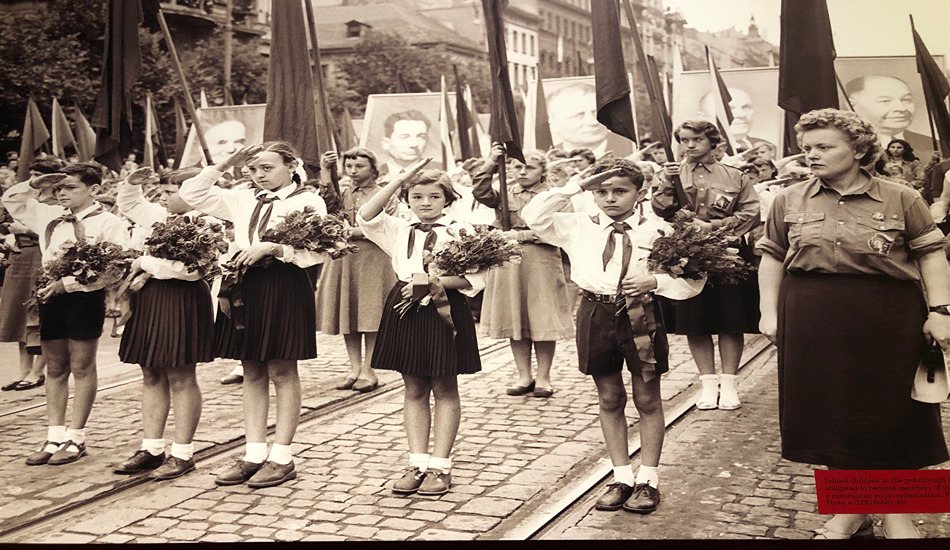
In Communist Czechoslovakia, children from third through ninth grades were obligated to become members of Young Pioneers, a Communist youth organization. The photo was taken in 1959.
More than a half million people fled Communist Czechoslovakia, a police state where goods were scarce, phones were tapped, mail was opened and freedoms were lost. In the permanent exhibition “Faces of Freedom: The Czech and Slovak Journey,” museum-goers can pick up a phone and hear about everyday life under Communism. Touchscreens activate video interviews with a few of the 100,000 political refugees who emigrated after Soviet troops invaded the country in 1968 to put down a resistance movement, labeled the Prague Spring.
Flip panels show visitors things that were banned or hard to get under Communism. Blue jeans, you learn, were the most desired item in Communist Czechoslovakia. American chewing gum and Western music were rarely unobtainable. A typewriter on display reflects the fact that authorities considered such machines so dangerous that a permit was needed to own one.
One gallery spotlights immigration to the U.S. in the late 19th and early 20th centuries, when Czechs and Slovaks came by steamship for economic opportunities. Today, almost 2 million people in the U.S. claim Czech or Slovak ancestry.
Visitors more interested in the cultural realm fixate on the exhibits pertaining to Czech and Slovak folk costumes, language, film, music, and Christmas and Easter customs. There’s even a display on kolaches.
Two small galleries host temporary exhibits. Through January 14, 2024, the exhibition “Brilliant Bohemian Garnets” displays priceless antique and modern garnets from the Czech National Museum in Prague. Many of the 200 pieces are garnet-decorated jewelry, but others are household items like eyeglasses, mirrors or picture frames. Mining and cutting equipment also are featured. After the showing at NCSML, the garnets will be put on permanent display in a new gallery at the Czech National Museum, never to leave the Czech Republic again.
Shopping and Eating at The National Czech & Slovak Museum & Library
Czech garnet and other jewelry is sold in the museum store, which also has Christmas ornaments, handicrafts, Moravian and Slovakian wines, dishware, miniature flags, toys, history books and cookbooks. One guide is titled How to Find Your Czech and Slovak Ancestors.
For groups of 25 or more, a traditional Czech buffet-style lunch can be paired with a self-guided tour. A guided experience for 10-25 persons can include a box lunch or coffee and kolaches.
The National Czech & Slovak Museum & Library, a Smithsonian Affiliate, was closed for several years after the 2008 flood that devastated Czech Village. Previously located by the river, the entire structure (1,500 tons) was picked up and moved to higher ground in 2011. The newly elevated and expanded building opened in July, 2012.
Things to Do in Cedar Rapids’ New Bohemia Neighborhood
The hip New Bohemia neighborhood, just over the bridge whose silvery arch proclaims “Gateway to New Bohemia,” provides the most choices for specialty shopping and dining in The District. Its centerpiece is NewBo City Market, a cavernous food hall and marketplace where good eats include hefty sandwiches at Capo Italian Beef, Midnight Smoker BBQ’s pulled pork and brisket, Mediterranean fare at Pita’z, and Caribbean Kitchen’s jerk chicken rice bowls, Jamaican beef patties and fried plantains. For sweet treats, indulge at Lori Ann’s Candies or Luna Gelato and Ice Cream. There are lots of tables inside and near the stage in the park out front.

NewBo City Market in Cedar Rapids’ New Bohemia neighborhood. (Photo credit: Travel Iowa)
Besides food outlets, NewBo City Market has several places to buy gifts and handicrafts. Tangled Heartstrings, for example, sells macrame cords made from recycled scraps from T-shirt factories and flower pots made from repurposed ceramic ware.
Steps away from the market are a number of creative businesses, some in buildings dating back to the turn of the 20th century. A walk down Third Street SE reveals shops like Next Page Books, Almost Famous Popcorn Company and Raygun, billed as “The Greatest Store in the Universe.” Raygun’s claim may be exaggerated, but it was my favorite. I especially liked the signs, magnets, postcards and T-shirts with irreverent, sassy messages. Among T-shirts that struck a chord: “America Needs Childless Cat Ladies” and “Gas Station Pizza: It’s What’s for Breakfast.” Shirts and magnets emblazoned “Cedar Rapids: Punching Holes in Cheerios Since 1970” refers to the city’s General Mills plant, which produces various cereals and food products, including Fruit Roll-Ups.
Cedar Rapids, the biggest grain-processing center in the state, also is home to a Quaker Oats factory, which turns out oatmeal, Captain Crunch and Crunch Berries, among other cereals. A popular magnet says “Cedar Rapids: Wake Up and Smell the Crunch Berries,” a reference to the aromas that often fill the air.
Brewhemia, a popular Third Street coffee shop in New Bohemia, does breakfast and lunch by day and turns into a lively bar at night.
Other Things to See and Do in Cedar Rapids
- Cedar Rapids Museum of Art. With a concentration on Midwest artists, this downtown museum holds the largest collection of works by Cedar Rapids’ own Grant Wood, Iowa’s most famous artist, and a selection is regularly on display. It also has many works by Marvin Cone, a good friend of his who taught at the city’s Coe College for four decades and an accomplished artist in his own right.
Best known for the iconic 1930 painting American Gothic, Wood (1891-1942) was the strongest proponent of the Midwestern Regionalist style, a movement that sought to create an indigenous, modern American art while rejecting abstract art and the influence of Europe. (American Gothic, which depicts a farming couple, is one of the most recognized portraits in the world and commonly parodied in popular culture.)
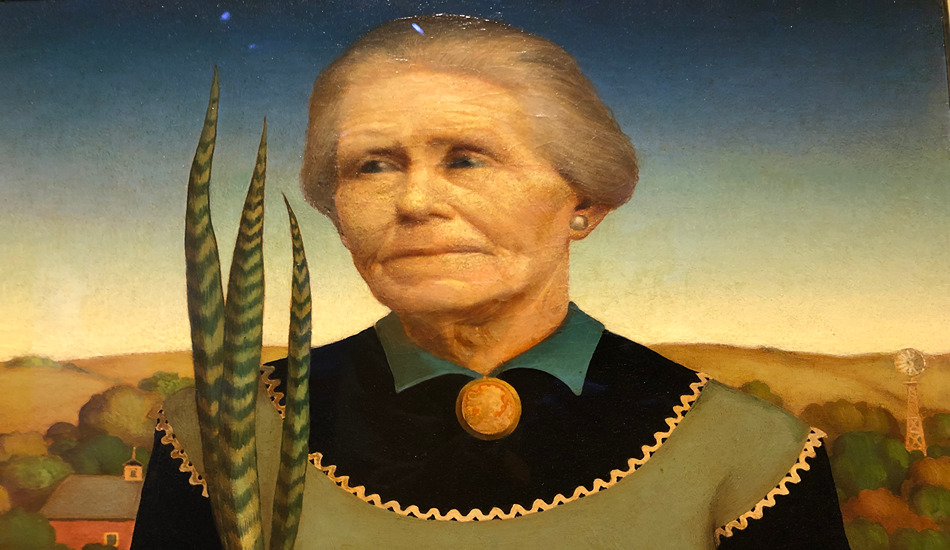
Grant Wood’s Woman with Plants, Cedar Rapids Museum of Art
Wood’s subject matter included idyllic farm landscapes, hard-working farmers and small towns. The museum’s 1929 Woman with Plants, an oil painting that portrays his 71-year-old mother holding a potted plant, is perhaps the most familiar work in the first floor’s ongoing exhibition From Farm Boy to American Icon. Born in Anamosa, Wood moved to Cedar Rapids with his family when he was 10 years old.
- Grant Wood Studio and Visitor Center. When Wood was a struggling artist, a family friend offered him the use of the hayloft above a carriage house as an art studio. The studio on Second Avenue and Eighth Street SE is open on weekends from April to December, and admission is free.
- Brucemore. This 26-acre estate features ever-changing gardens and tours of an 1886 Queen Anne-style mansion. Wood decorated the daughter’s sleeping porch with a plaster relief depicting vines, flowers and wildlife.
- Veterans Memorial Building. Set on an island in the river, this 1927 downtown landmark features Grant Wood’s largest work of art—a 24-foot-tall stained-glass window that commemorates U.S. veterans. The central female figure represents the Republic, and at the base are six soldiers representing the Revolutionary War, War of 1812, Mexican-American War, Civil War, Spanish-American War and World War I.
The building’s free-admission military museum contains artifacts from various wars. Of most interest is the Korean War exhibit, which includes vintage film clips documenting action on the battlefield and industrial production on the home front. American losses in that oft-forgotten 1950s war totaled 33,741, of whom 580 were Iowans.
For more information about traveling in Iowa, be sure to read out Iowa Tour Guide or you can subscribe to Leisure Group Travel for FREE.
Lead photo: Rural folk costumes, National Czech & Slovak Museum & Library. (Randy Mink Photo)


